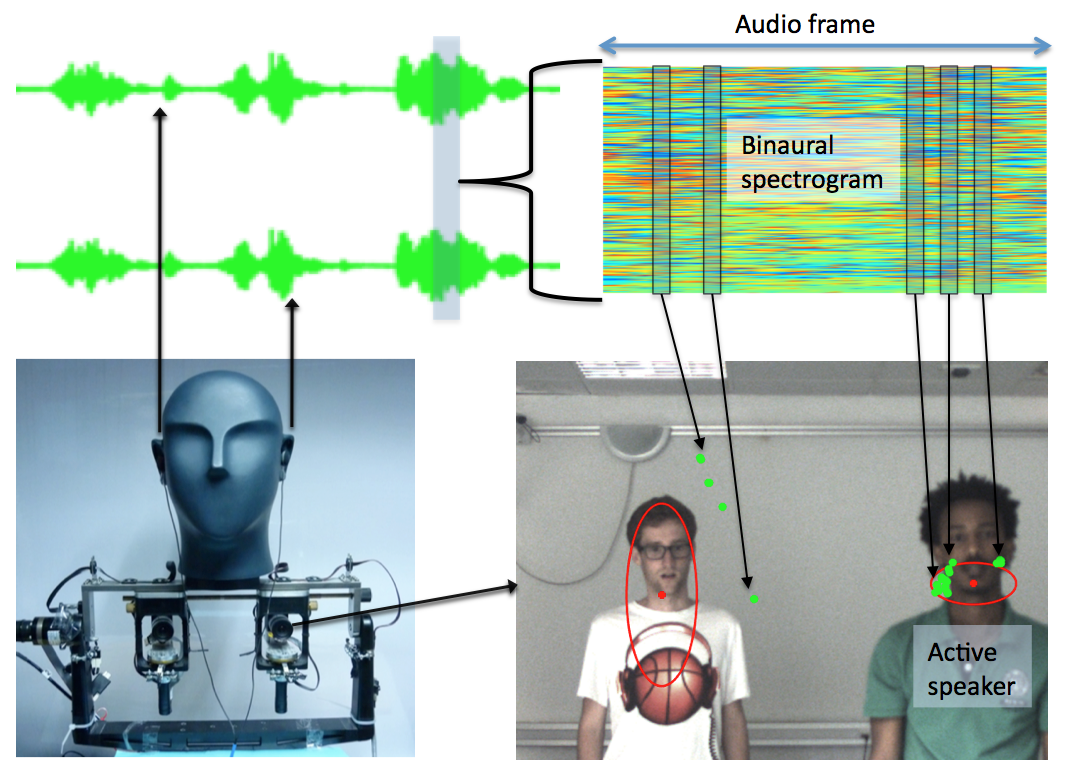Section: New Results
Audio-Visual Speaker Tracking and Recognition
Any multi-party conversation system benefits from speaker diarization, that is, the assignment of speech signals among the participants. More generally, in HRI and CHI scenarios it is important to recognize the speaker over time. We propose to address speaker diarization and speaker recognition using both audio and visual data. We cast the diarization problem into a tracking formulation whereby the active speaker is detected and tracked over time. A probabilistic tracker exploits the spatial coincidence of visual and auditory observations and infers a single latent variable which represents the identity of the active speaker. Visual and auditory observations are fused using our recently developed weighted-data mixture model [38] , while several options for the speaking turns dynamics are fulfilled by a multi-case transition model. The modules that translate raw audio and visual data into image observations are also described in detail. The performance of the proposed trackers [29] , [30] are tested on challenging data-sets that are available from recent contributions which are used as baselines for comparison. Currently we are developing a variational framework for the on-line tracking of multiple persons [36] .
Websites:
https://team.inria.fr/perception/research/speakerloc/
https://team.inria.fr/perception/research/speechturndet/
https://team.inria.fr/perception/research/avdiarization/
|


